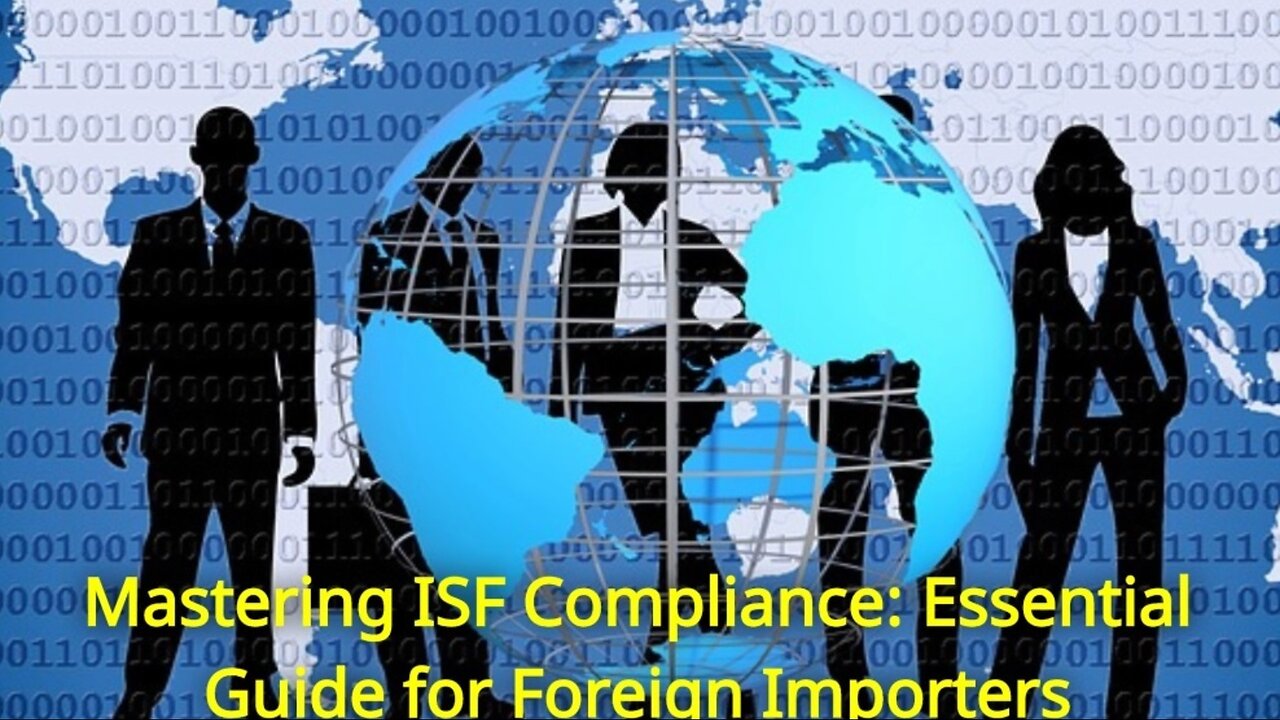Premium Only Content

Avoiding Delays and Penalties: ISF Compliance Tips for Foreign Importers
ISF Depot // 661-246-8217 // customs@isfdepot.com // www.isfdepot.com
In today's video, we discussed the Importer Security Filing (ISF) compliance for foreign importers. ISF is a requirement by US Customs and Border Protection (CBP) for ocean shipments entering the United States. Compliance with ISF requirements is crucial for foreign importers in order to avoid penalties and delays in customs clearance.
To comply with ISF, foreign importers need to timely submit the Importer Security Filing, providing accurate and complete information about their cargo at least 24 hours before the cargo is loaded onto a vessel bound for the United States. It is recommended for foreign importers to work with a trusted customs brokerage firm to assist with ISF filing and ensure its accuracy.
Some key information required for ISF filing includes seller and buyer information, container stuffing location, bill of lading number, and harmonized system (HS) codes for each item in the shipment. This information helps CBP assess the potential risk associated with the cargo.
In addition to ISF filing, foreign importers may need to obtain a customs bond, which is a financial guarantee for the payment of duties, taxes, and potential penalties in case of non-compliance. Customs bonds are important for a smooth customs clearance process.
Foreign importers must ensure the accuracy and completeness of their ISF filing to avoid penalties, shipment holds, or seizure of goods. Any changes or updates to the initial ISF filing should be promptly communicated to CBP. ISF compliance is an ongoing requirement that requires attention to detail and timely updates.
By working closely with a trusted customs brokerage firm and following the guidelines for ISF compliance, foreign importers can navigate the customs clearance process smoothly and efficiently.
#usimportbond #isfcustomsbroker #uscustomsclearing #isfentry
Video Disclaimer Here: This tutorial is independent and not affiliated with any US governmental entities.
-
 3:29
3:29
ISF Depot
9 days agoCracking the Duty Puzzle: Understanding ISF Filings and Customs Bond Options
6 -
 LIVE
LIVE
Wendy Bell Radio
6 hours agoGuns Don't Kill People
7,190 watching -
 LIVE
LIVE
Matt Kohrs
9 hours agoMarket Open: New Highs or Bust?! || Live Trading Futures & Options
597 watching -
 46:34
46:34
Randi Hipper
1 hour agoWALL STREET'S CRYPTO BET REVEALED! HINT: IT'S NOT BITCOIN!
2.18K2 -
 LIVE
LIVE
The Mike Schwartz Show
1 hour agoTHE MIKE SCHWARTZ SHOW with DR. MICHAEL J SCHWARTZ 08-28-2025
4,160 watching -
 2:04:35
2:04:35
Game On!
20 hours ago $3.07 earnedCollege Football Is BACK! Week 1 Preview!
36.2K2 -
 4:00:18
4:00:18
The Bubba Army
1 day agoMinneapolis Shooter Story Unfolds! - Bubba the Love Sponge® Show | 8/28/25
74.5K9 -
 LIVE
LIVE
JuicyJohns
2 hours ago $0.26 earned🟢#1 REBIRTH PLAYER 10.2+ KD🟢
23 watching -
 LIVE
LIVE
GritsGG
2 hours agoWin Streaking! Most Wins 3485+ 🧠
96 watching -
 16:58
16:58
marcushouse
15 hours ago $4.39 earnedSpaceX Starship Flight 10: What Really Happened! 🚀
55.1K13